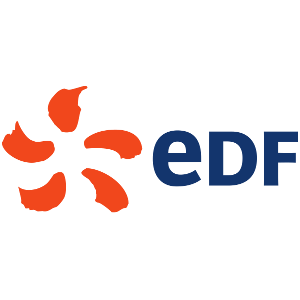Conduct and Maintenance Guides of nuclear facilities.

Context
- Leading company: NeoDoc
- Partner company(ies):
- Customer Name: EDF
- Sponsoring Service: R&D
- Industry: Energy
- Duration of the project: Ongoing since 2016
- Users affected by the solution (end user): EDF engineers and technicians
-
Customer needs:
EDF maintains and operates a complex and extensive document database.
This requires establishing links between “parent” and “child” files as well as revisions to each of these files.
It was also important to take into account the peculiarities of each entity to both personalize the documents and guarantee a uniformity of the information provided.
- Creating a map of all of the entities that produce documents
- Ensuring intervention of all the different EDF departments nationally services is collaborative
- Generating and identifying the level of dependence between the different content blocks and documents precisely and flexibly
-
Services offered:
- The solution: a documentation map modelled in a visual and flexible Components Content Management System (CCMS), Calenco
Methodology
-
Method used:
-
Description of the method (in a few lines):
With this solution, Engineers and Technical Writers can set and navigate through documents dependencies with ease and precision. They immediately identify and react directly and quickly for numerous cases, for links:
- from one documents to another;
- from one document to a specific part of another document, with a very narrow target (paragraph or other);
- from a paragraph to another paragraph.
-
Ressources allocated (number and function - internal or customer resource):
- Jennifer Bauffe - R&D department EDF
- Denis Cobert - Operating and Test Department - Groupe STE
- Camille Bégnis - CEO at NeoDoc
- Maxime Bégnis - developer at NeoDoc
- Almudena San Roman - Project manager at NeoDoc
- Working groups/workshops needed: Documentary analyses and audits, Calenco training, installation and IT interventions on the Calenco server.
-
Tools used:
- Graph-oriented Neo4J database
- Calenco
-
Deliverables:
- The solution: a documentation map modelled in a visual and flexible Components Content Management System (CCMS).
-
Benefits
-
Costs (ROI):
- The technical safety benchmark Le for the same nuclear reactor level (same power, same design) is complex because it is made up of a basic benchmark to which updates are added as equipment and software evolves. Calenco enables us to have an overall vision of all of the requirements for each reactor level. This helps us with analysis and the creation of future versions;
- Project updates can also be flagged. As a result, a excel file for project evolutions (which is difficult to follow) has been replaced and direct visualisation is enabled for the project evolutions in the level file;
- Tracking of evolutions and referencing the different documents linked to the creation of the document are carried out directly in the file, making it easier to follow developments in the project;
- The nuclear sites use documents written by the DIPDE, to which they add their own site specificities with Calenco. Sites now use only one word file and gain time managing documents saved individually. Site documents are specific publications compiled from the same file created by DIPDE;
- The dedicated style sheet enables extraction of tables to generate a CSV for another application, to guarantee data compliance;
- Visualisation of the benchmark for the nuclear level enables rapid determination if an evolution impact a procedure that is already ongoing.
-
Deadline:
- Fast and simplified updates for all documents;
- At a glance, up-to-date links or outdated links appear clearly, and it's easy to update them.
- The productivity boost is clear.
-
Quality:
- Harmonisation of content creation and modification procedures for documents.
-
Security:
- Reliability of blocks of content created or updated for inclusion;
- Greater security: when content is modified, the writer can measure the impact of that change on all related documents and departments.




